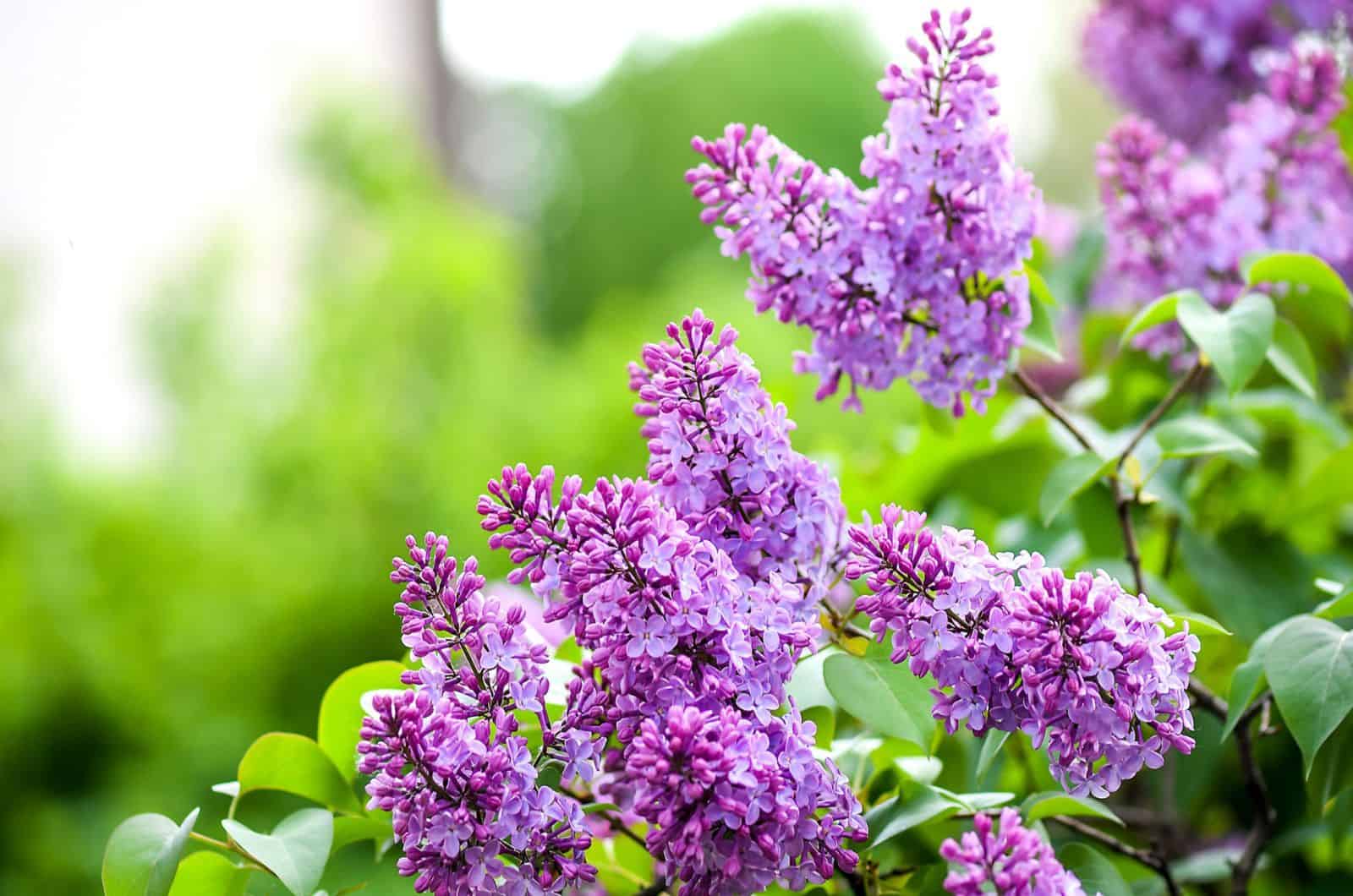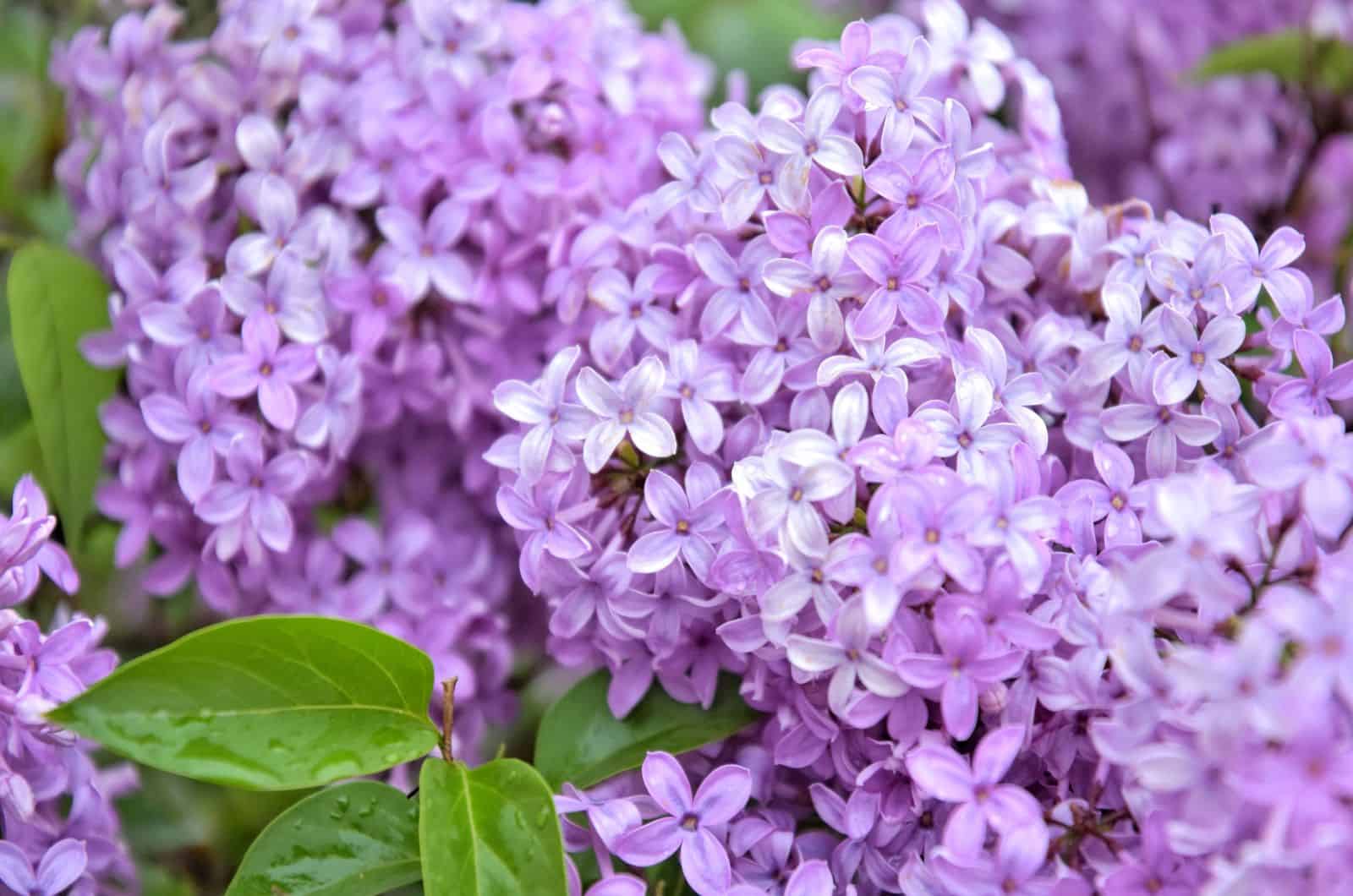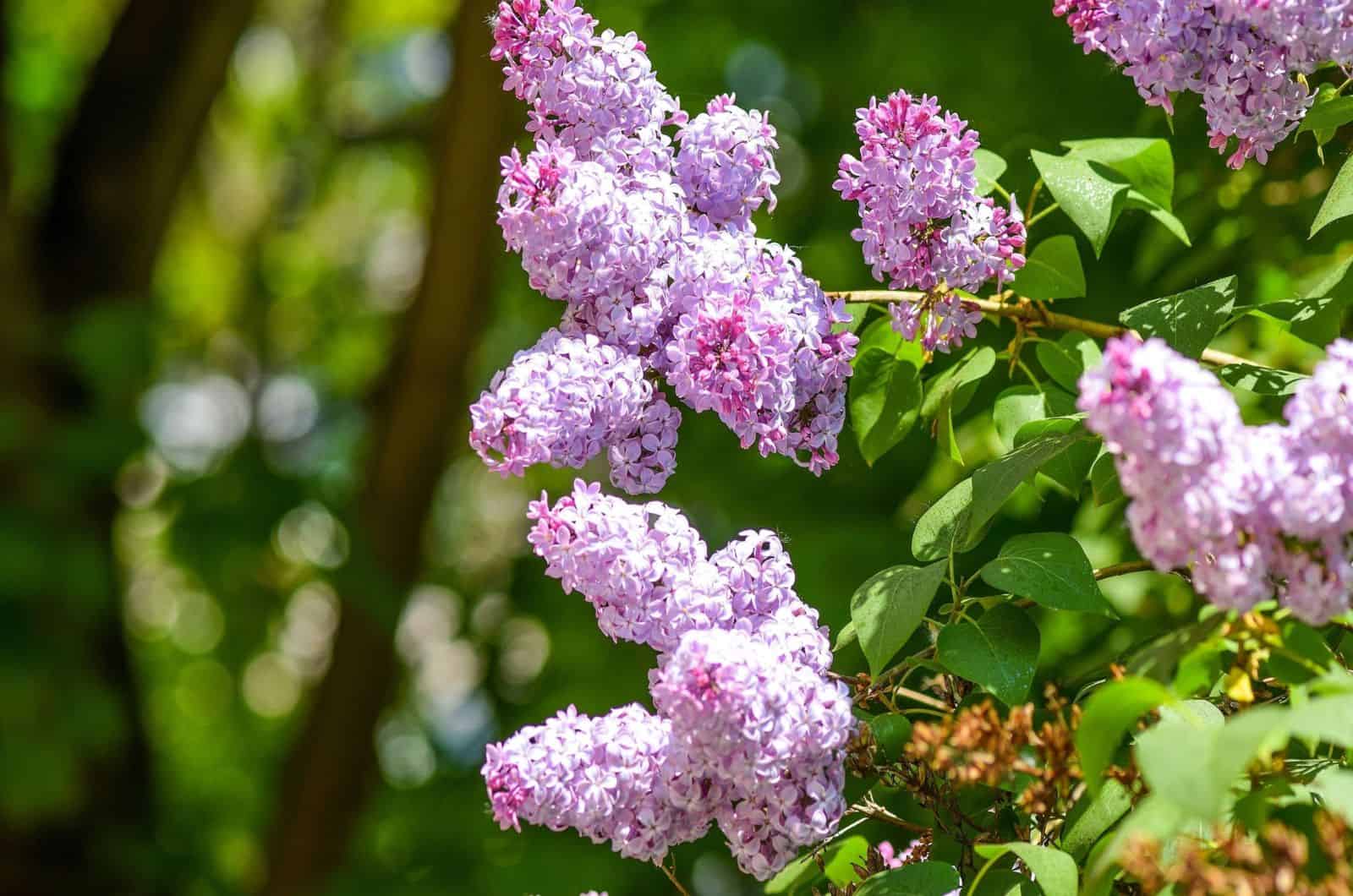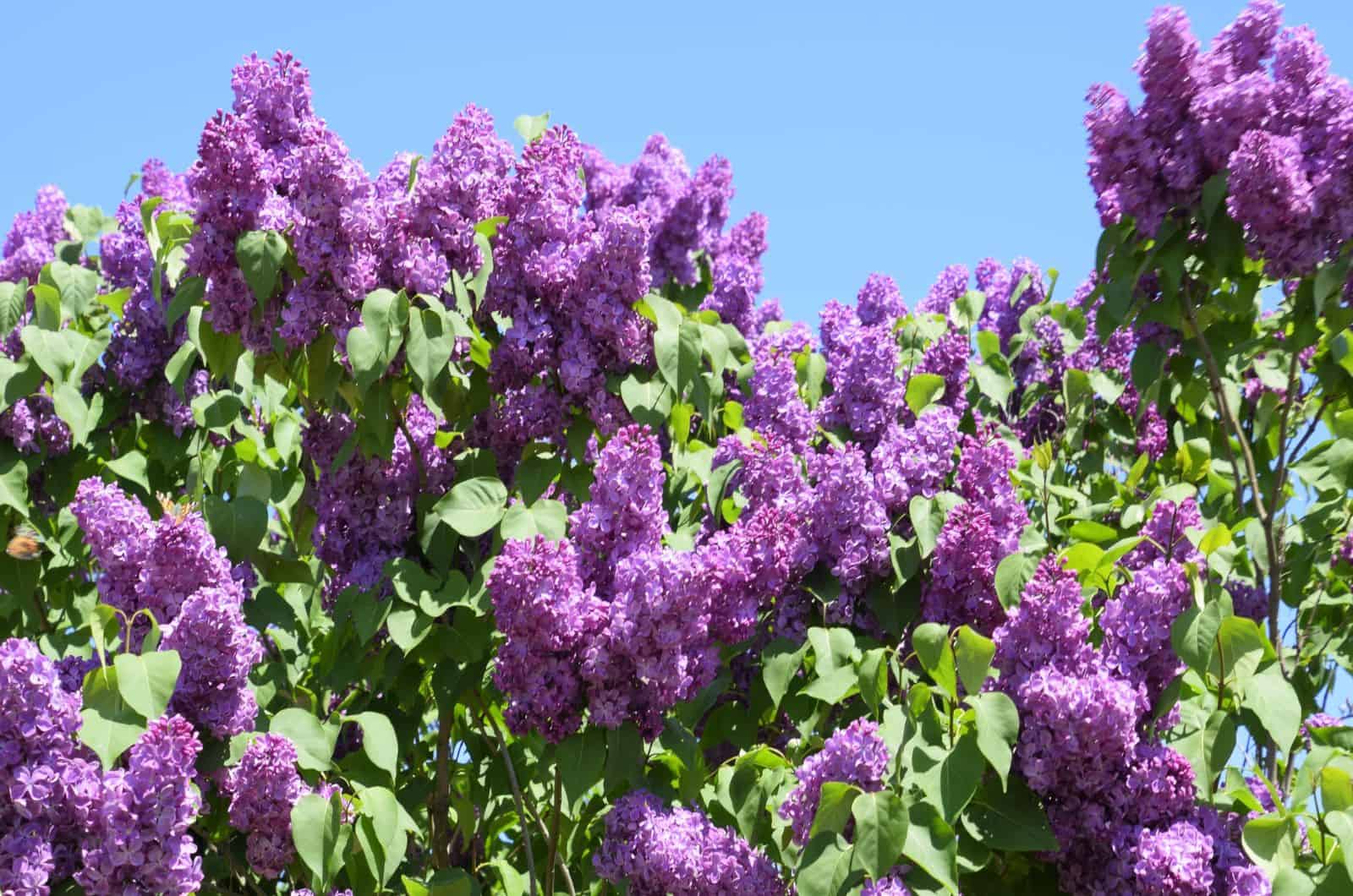Flowers offer us hope, cheer us up, and give us peace of mind, so it’s not surprising that we are always looking for new ones to grow in our gardens.
However, flowers have preferred climates and hardiness zones they thrive in, and it might be sad to discover that you can’t grow a certain variety in your region.
Thankfully, there are hardy plants that can survive almost anywhere, and one of the best are lilac bushes!
Unfortunately, they aren’t suited for warm climates and hot Floridian summers because they are cool-weather plants. However, growing lilacs in Colorado is a piece of cake because the weather there is perfect.
This article presents some things you need to look out for when planting and caring for common lilacs in Colorado, such as finding a suitable location, soil preparations, and post-planting care.
However, common lilacs aren’t the only type that can thrive in the Centennial State, so we’ll also look at some other common varieties you could grow in your Colorado garden.
Before we talk about all that, let’s look at the basics of common lilacs:
[table id=252 /]
Growing Common Lilacs In Colorado
There are many trees and shrubs with purple flowers in the world, and lilacs are among them.
Growing this spring-flowering shrub in Colorado isn’t that difficult, but there are still some things you need to look out for.
These perennials are incredibly fragrant, and they will festoon your front yard with their purple, pink, yellow, and white flowers in late spring.
This plant doesn’t require much, but if you completely neglect it, it will stop blooming, and relaxing walks down scented alleys and streets will become a thing of the past.
Luckily, there are some simple things you can do to avoid this issue and enjoy these purple flowers for many years to come.
Let’s find out more!
Finding A Suitable Location
A good location is a key to growing lilacs in any state, not just Colorado. This plant requires full sun to flourish, and anything below 6 hours of sunlight per day will hinder its development.
Therefore, you must find a well-lit location away from tall buildings and trees, which can all create shadows that prevent lilac flowers from appearing when bloom time arrives.
Lilacs also like their privacy, so growing them near foundations and trees can stunt their growth and prevent them from spreading their roots wider into the soil.
Choose a spot that’s at least 5 feet away from anything that might prevent the lilac roots from expanding.
Lilacs require a few weeks of extremely low temperatures, but icy winds are a whole different story. Harsh winter gales can hurt these plants, so you should protect them with tree wraps and mulch, and prune the weak branches before the winds start blowing.
Colorado isn’t the most humid state in the US, but the air can still become saturated with moisture. As lilacs cannot tolerate high humidity levels, you should ensure there’s enough airflow for the plant to breathe.
Unfortunately, common lilacs need lots of space for their roots to develop, so you cannot grow them in containers. However, there are varieties ideal for pots, and you can always try growing them that way to improve your landscape design.
Soil Preparation
The next thing you need to pay attention to is soil preparation. Lilacs cannot grow in any old medium, so you should ensure that it is well-draining before planting.
In addition to good drainage, the substrate for lilac plants needs to be rich, which is why adding compost and humus before planting is something many growers around the world do.
There isn’t an exact amount of organic material you should add to make the soil drain better. However, you can always test the drainage and gradually add more compost, manure, shredded bark, etc., mix it with the garden soil, and then test it again.
Here are some tips for testing soil drainage:
Instead of building a raised bed, which would be a costly investment considering that lilacs can get huge and spread their roots very far, you can make a mound or plant it on higher ground.
Lilacs cannot withstand too much moisture in the soil, but if the only available spot for this plant is near a pond, you should build a three-foot tall mound of soil, gravel, compost, and manure.
Common lilacs are the most tolerant variety when it comes to heavy clay soils, but not even they can tolerate a wet substrate.
Another soil requirement concerns the pH level, and this plant cannot thrive in acidic mediums, so you should always test the soil before planting. If the substrate isn’t neutral or mildly alkaline, you can always amend it by adding some lime.
Planting
Planting the common lilac shrub isn’t rocket science, but there are still some things you need to watch out for, such as the time of planting, spacing, depth, etc.
You can plant lilacs either in spring or fall, and both have their benefits. Planting lilacs in the fall before the soil freezes is the best option. These shrubs are cold-hardy and actually need many cold days in order to produce the best blossoms.
However, planting lilacs in the early spring isn’t the worst thing in the world, and you’ll still have a viable plant that will produce purple-blue flowers.
You can use either plant suckers from an already established shrub or transplant a lilac from your local nursery.
If you wish to make a lilac hedge, you should leave 5-15 feet between each plant so that the roots have enough room to grow.
The critical thing before planting is making sure that the soil is loose enough. If you plan on creating a hedge or alley of lilacs, you should research some tillers for breaking new ground and either rent one or kindly ask your neighbor to borrow theirs in order to get the job done quickly and efficiently.
Planting Lilac Suckers
There are many common lilac cultivars, many of which are available in Colorado. Their flower colors can be blue, purple, pink, or white. Some cultivars are taller than others, and there are some with incredibly fragrant flowers that nothing else can compare to.
Whichever variety you choose, planting suckers is virtually the same. After preparing the soil, you need to dig a hole deep enough for the offshoot. Place the branch into the hole, fill it with soil, and make sure the sucker can stand on its own.
Water the offshoot thoroughly, and wait. Lilacs take a long time before they start producing flowers, and you’ll probably have to wait 4-5 years before enjoying the magenta-pink flowers of your Arch McKean cultivar.
Transplanting Lilacs
The transplantation of nursery-bought lilacs isn’t any more complicated than sticking a sucker into a deep enough hole in the garden soil.
You should plant your lilacs at least 2-3 inches deeper than they were when potted, so take this into consideration when digging the hole. Spread the roots gently, then simply place the shoot into the ground.
If you got your lilac transplants wrapped and entwined, you should remove the bag and the rope before planting.
Cover the roots with some topsoil and water them thoroughly. After watering, add more soil to fill in the hole and then wait.
Care Guide
Lilacs are popular in many countries, so it’s not surprising that they have wriggled their way onto the list of charming French flowers.
Common purple lilacs are low-maintenance shrubs, but you still have to meet their basic requirements, including their need for light, water, and nutrients.
Of course, there’s more to caring for lilac flowers than simply meeting their basic needs.
That’s why we are going to talk about everything you need to do in order to enjoy their attractive flowers in Denver, Colorado Springs, Boulder, etc.
Light Requirements
We already mentioned that lilacs need full sun exposure in order to produce the best blooms, but what happens if it doesn’t get at least six hours of sunlight each day?
They will produce fewer blooms, or maybe none at all, in shaded locations, and if you can’t remove the obstacle that’s preventing the sun from getting to your lilacs, you’ll have to move the shrubs themselves.
Lilacs can also get leggy if they don’t get enough sunlight. They stretch their stems in search of light, but if they don’t find it, photosynthesis slows down, energy and food become scarce, and the elongated branches become too heavy for the plant to carry.
Therefore, you must always ensure that there’s enough sunlight before planting to avoid having to move the plant in the following years.
Water And Humidity
Lilacs are drought-tolerant plants, but they still need some water to survive – especially immediately after planting.
The soil should never be dry during this period, and you should irrigate your lilacs once or twice a week in the first years of their lives until they get established.
Young plants are susceptible to drought stress, so ensure that the soil is consistently moist during this time.
Established plants don’t require frequent watering, but they should still be irrigated once every 10-14 days. Water them deeply and allow the soil to somewhat dry out between waterings.
Mature lilacs cannot tolerate too much moisture in the soil because water will fill the air pockets, and there wouldn’t be enough oxygen to supply the entire plant.
The roots will begin to suffocate if this happens, and the first signs will be visible on the plant’s leaves, which will start wilting and become pale and yellow.
Humidity
These plants cannot tolerate high humidity, but that’s a bonus because Colorado isn’t well known for humid summers.
If the air moisture does get a bit too high, planting these shrubs 5-15 feet away from each other will ensure proper air circulation, and you won’t have to worry about too much moisture getting trapped between your plants.
Temperature
Lilacs are incredibly hardy plants and are favored by gardeners around the world due to their ability to endure temperatures as low as -35 °F, although some varieties are said to be able to survive in much lower temperatures (as low as -60 °F).
Freezing temperatures like this aren’t an issue for lilacs, and they actually need a couple of cold weeks to be able to produce flowers.
They bloom in spring because the temperatures aren’t exceptionally high, but scorching weather cannot hurt this plant. It will still flower next year as long as the winters are long and cold.
Even though it seems like it can handle just about anything, lilacs don’t actually do well in winter winds, so make sure to protect them if your region is windy.
Soil And Fertilizer
You already know that lilacs prefer well-draining soils, but we’ll discuss these preferences in more detail in the following paragraphs.
The Lilac shrub prefers a mildly acidic, neutral, or slightly alkaline growing medium with a pH between 6.5-7.0. You shouldn’t plant it in acidic soils as they can hinder nutrient absorption and cause your plant to wither.
Thankfully you can always add lime to lower the acidity of the substrate.
When speaking about drainage, we constantly talk about well-draining mediums. Most garden soils don’t have suitable drainage, so you should amend them by adding compost or humus.
I once wondered how long it takes to make compost, but now I know that you can make it in three months and have enough for all your plants. Making humus takes a long time, but you can always buy some if you want to amend the soil with it.
Lilacs also need mediums rich in organic content, so adding compost and humus meets that requirement as well.
Finally, clay soil won’t kill a lilac, but it might stunt its growth. If you want to mature as fast as possible, you should consider making soil amendments.
Fertilizer
Almost all plants benefit from occasional feeding, and the same goes for lilacs, especially if the soil isn’t particularly rich in nutrients and organic material.
However, you should avoid fertilizers with high amounts of nitrogen as they will only lead to more vegetative growth and fewer blossoms.
Of course, you shouldn’t entirely refrain from nitrogen as this mineral is responsible for branches and leaves, which are the main instruments of photosynthesis.
Therefore, you should use a well-balanced, general-purpose fertilizer such as triple 10, or an organic fertilizer with high phosphorus levels to promote blooming.
Furthermore, lilacs aren’t heavy feeders and only need to be fertilized once a year in early spring.
You don’t have to feed this shrub in the first year of planting, but add some humus or compost to ensure it has enough nutrients until the next year. In the spring of the second year of planting, you can add some slow-release fertilizer to sustain this plant until the following year.
This is a truly easy-to-care-for plant, and you don’t have to feed it more than once a year.
Pruning
Trimming lilacs is essential as it can prevent legginess, increase flower bearing, and make the surrounding landscape more attractive. However, pruning this shrub requires a lot of strength, so you won’t be using simple hand pruners all the time.
Lilacs set buds for the flowering of next year after they finish blooming, so you should prune them and deadhead the remaining flowers in spring, not later in the summer and fall. Summer and fall pruning will only lead to fewer blooms the next year as you’ll remove most of the buds.
If the shrub hasn’t outgrown its space, you can simply shape it a bit and remove any diseased, dead, or broken stems. For lighter pruning, you can use regular pruners, and you can always find some secateurs for arthritic hands as they usually don’t cause too much pressure on the joints.
Overgrown lilacs require more trimming and cutting because the inner parts probably won’t flower due to insufficient light exposure. The branches are often woody and unsightly, and you can remove them without worrying about harming your plant.
Use a saw to cut a third of all woody branches at least two inches in diameter. Repeat this process for the next three years so that the plant can gradually come back to life and regain its former glory. It will slowly resume its full, bushy looks, and you’ll notice new growth every year.
If your shrub is too far gone, you can remove all woody stems at once, but it will require much more care, fertilizer, and water in the coming months.
If you still have some doubts about pruning, here’s a video to help you get your shrubs in shape:
How Long Do Lilacs Bloom In Colorado?
Lilacs usually stay in bloom for about 3-4 weeks, depending on the climate and the variety you choose to grow.
However, that period is somewhat shorter in Colorado, and this shrub will usually decorate your garden with its attractive flowers for about two weeks.
Flowers make their first appearance in mid-spring, even though there are some later bloomers that start flowering in late spring.
Companion Planting
Lilacs aren’t well-known for wanting company and are quite territorial about their space. However, growing some herbaceous peonies at the foot of this shrub can hide its less attractive features, and their roots won’t take up too much space.
Lilac shrubs are on the list of shallow-rooted plants, but they still need some space to develop, so don’t plant trees or other branching shrubs too close to this plant.
Passion flowers are another great companion that is quite clingy and wraps around the lilac, making the unsightly bottom easier on the eye.
Daylilies, daffodils, tulips, and grape hyacinths are all popular flowers that bring out the best of any lilac shrub.
Pests And Diseases
Unfortunately, lilacs aren’t resistant to pests and diseases – but there are methods to prevent and treat them if it ever comes to that.
Lilac borer (also known as ash borer) is a common insect that attacks this shrub and tunnels its way into the wood, where it feeds on the outer sapwood and phloem.
It can weaken or even kill the stems, so you should do everything in your power to free your plant from it.
Unfortunately, getting rid of them isn’t always easy because they don’t usually linger on the surface for very long, so you should try and prevent them from inhabiting your shrub in the first place.
Ensure that young shrubs don’t suffer too much stress and physical damage by being extra careful when working with sharp objects around them.
You can spray your lilacs with preventive insecticides after they finish flowering and then repeat the process approximately every three weeks.
Diseases
The most common disease that attacks this plant is powdery mildew, which usually appears in hot and humid conditions.
It is always better to prevent powdery mildew, so make sure your lilacs have enough airflow for their leaves to dry quickly. Always water this shrub at its base and avoid wetting the leaves to reduce the possibility of this infection.
If you notice a whitish powder on top of your lilac leaves, you should apply fungicides at the first sign of the disease.
Repeat the process if necessary or indicated by the instructions.
Other Lilac Varieties To Grow In Colorado
Common lilac isn’t the only type that can grow in Colorado. There are many other varieties and cultivars that thrive in this state.
This section brings you the most popular lilac types (other than the common lilac), which can adorn your Colorado garden.
Japanese Tree Lilac
The Latin name for this variety is Syringa reticulata, and it can grow up to 20-30 feet tall. It blooms in very late spring and bears delicate white blossoms whose fragrance resembles that of privets.
The most popular cultivar is Ivory Silk due to its compactness and brown or red-brown branches and flaking bark.
Korean Lilac
Syringa meyeri is a Korean lilac that takes 20 years to reach a height of 3-6.5 feet. The lavender-blue blossoms of the cultivar Palabin appear in late April or early May when planted in USDA zone 6b.
It doesn’t require much maintenance like other lilac shrubs, which is another reason – besides the flowers – that makes it desirable for growers.
Littleleaf Lilac
The scientific name of this variety is Syringa microphylla, and it’s characterized by a dense and compact shrub usually no larger than 6-7 feet.
The most popular cultivar is called Superba, and it’s not just the vivid color that makes it so special. This variety can bloom a couple of times a year and make quite a comeback in summer and fall, producing flowers almost more attractive than those in springtime.
Broadleaf Lilac
This variety is also known as early lilac, but botanists refer to it as Syringa Oblata. It is quite hardy and even less susceptible to freezing than the common lilac.
The Cheyenne cultivar has pale purple flowers and is incredibly fragrant, and you can enjoy and relax with this scent in early spring.
Sweetheart Lilac
This variety is a hybrid between Syringa vulgaris and oblata, and its name is Syringa x Hyacinthiflora.
It’s approximately 12 feet tall and has many cultivars with flowers varying between purple, lavender, and white. It blooms in early spring, about a week or ten days before the common lilac, and you can extend the flowering period of your shrubs if you plant different varieties.
Downy Lilac
This variety was formerly known as Syringa patula, but now botanists refer to patula as a subspecies, not species, so this plant’s name is Syringa pubescens subsp. patula.
The most popular variety is Miss Kim due to its fragrant, icy-blue lavender flowers. It usually grows 6-8 feet long, and its dense foliage and branches make it a great addition to any landscape.
Preston Lilac
The last lilac variety that we’ll examine is another hybrid, this one is called Preston lilac. It is named after the Canadian who hybridized it, so it’s no wonder that one of the most famous cultivars is called Miss Canada.
Its scientific name is Syringa x Prestoniae, and it can reach 8-12 feet tall. It flowers approximately ten days to two weeks after the common lilac.
Miss Canada isn’t only popular due to its name – it’s the deep pink blossoms that make it attractive to growers around the world. Another cultivar that can be grown in Colorado is Isabella, which produces lavender-colored flowers.
Final Word
This article brought you some tips for growing lilacs in Colorado, bringing you one step closer to your dream coming true.
The key things to look out for when planting these shrubs are a suitable location and soil. They need plenty of sunlight and a well-draining medium to thrive, so you should plant them in a spot that provides these things.
We also detailed an extensive care guide, which included pruning requirements so your shrub doesn’t get all woody.
We included some common companion plants as this plant loves some company that doesn’t spread its roots too far out.
This plant isn’t resistant to issues such as pest infestations and diseases, but we included a short overview and some techniques for preventing and treating them.
Finally, many other lilac varieties can grow in Colorado, not just common lilacs, and they have virtually the same requirements, so you can choose any of them to decorate your garden.
Happy planting, and until next time!
Like this post? Share or pin it for later!






